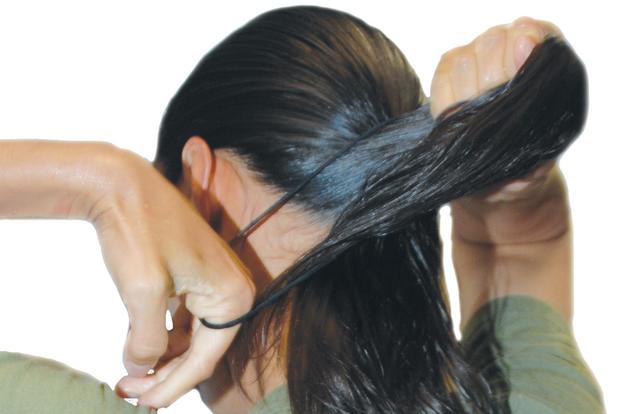Female sailors may immediately begin wearing their hair in ponytails, locks, wider buns and sometimes even below their collars -- but they must follow strict guidelines when doing so.
The Navy released a slew of rules about female hair grooming standards a day after Chief of Naval Operations Adm. John Richardson announced the changes during a Facebook Live event.
The new styles are authorized only when a sailor's hair doesn't get in the way of safety gear. Uniform covers must also continue to be worn squarely on the head, and commanding officers have the right to veto any styles deemed to be a safety hazard, according to Navy administrative message 163/18.
The new regulations, which include options that more easily allow black sailors to style their natural hair, make the Navy a more inclusive environment, Richardson said. The changes are the result of recommendations from a working group, which took feedback from the fleet.
Lt. Cmdr. Jess Cameron called the announcement "a step forward" in an interview with The Associated Press. "They're getting more female feedback in the service, and updating what I think are somewhat antiquated guidelines that maybe no longer serve their purpose in today's society, today's military," she said.
Here's a look about what is -- and is not -- allowed when it comes to the newly approved hairdos.
Braids and ponytails.
Previously allowed only during physical training, female sailors may wear a single braid, French braid or ponytail in their service, working and PT uniforms.
Any hair ties or other accessories must match the color of the sailor's hair. And the end of the braid or ponytail can fall no more than 3 inches beneath the lower edge of their shirt, jacket or coat collar.
They're not approved everywhere, either. If sailors are around rotating gear or other operational hazards, they'll need to put their hair up in the standard bun unless the ponytail or braid doesn't fall below the bottom of their collars.
New rules for buns.
Buns previously could not exceed 3 inches when measured from a sailor's scalp. Now the width or diameter of a bun can be up to the same width as the back of the sailor's head.
Hair locks.
Women may now wear locks, or locs, in addition to the two-strand twist and multiple braids that were previously authorized in 2014, as long as they fall above the collar. Locks are twists from or near the root to the end of the hair that create a uniform ringlet or cord-like appearance, the message states.
Capt. Thurraya Kent, a 26-year officer who serves on the working group, told the AP that the decision to approve locks will help eliminate a distraction and enable sailors to keep their hair natural instead of processing it chemically.
Women with short, medium and long hair can wear locks as long as they:
- Form straight lines with parts in the form of neat squares or rectangles. (Zig-zagging or curving is not permitted.)
- Are no more than 3/8 of an inch apart when worn loose. Locks can also be worn in a bun, twist, braid or other authorized hairstyle.
- Don't exceed more than half an inch of new hair growth at the scalp.
"Commanding officers have the ultimate responsibility for determining when hairstyles are eccentric, faddish or out of standards," the message states.
A rare relaxation of standards.
If female sailors are in their dinner dress uniforms, they now have permission to let down their hair.
Women can wear their hair below the lower edge of their blouse, jacket or coat collars on the dinner-dress uniform. All other standards about neat and professional appearances still apply.
-- Gina Harkins can be reached at gina.harkins@military.com. Follow her on Twitter @ginaaharkins.










